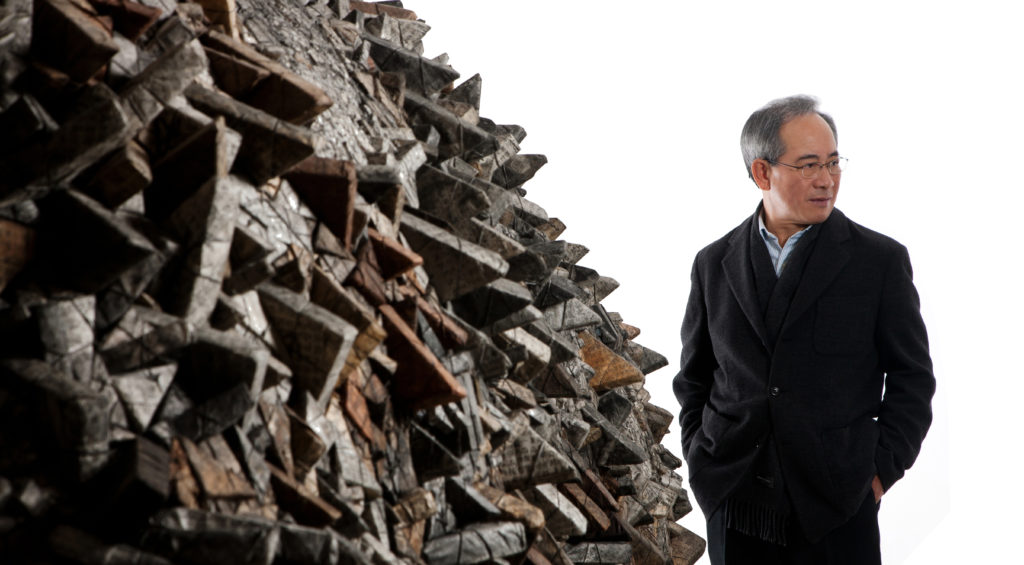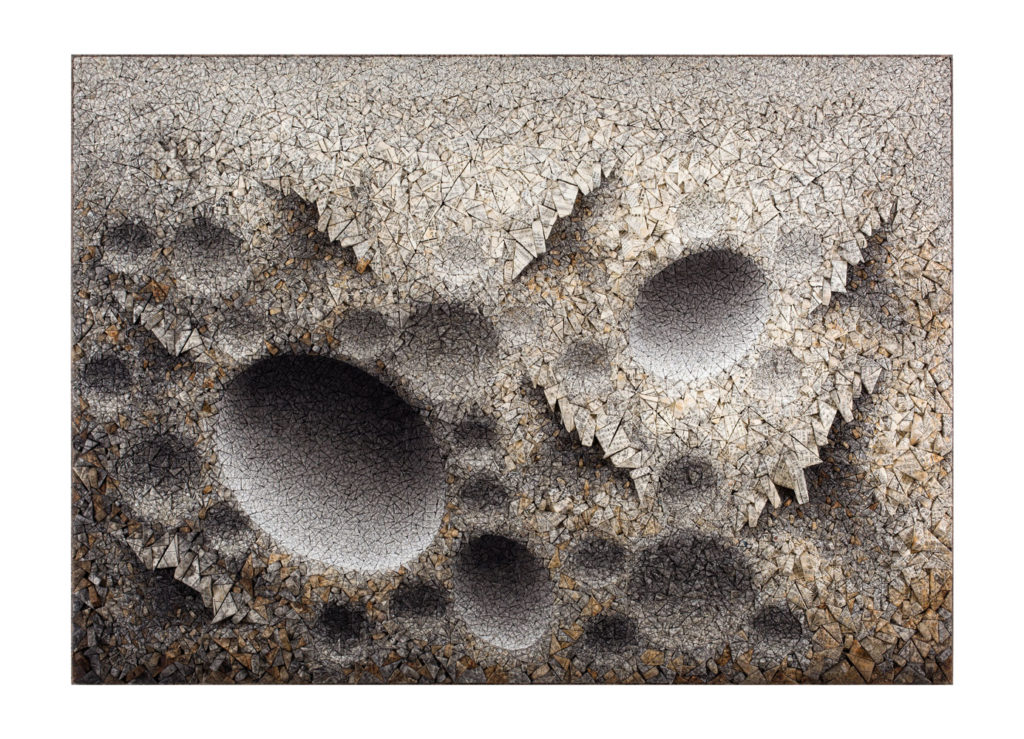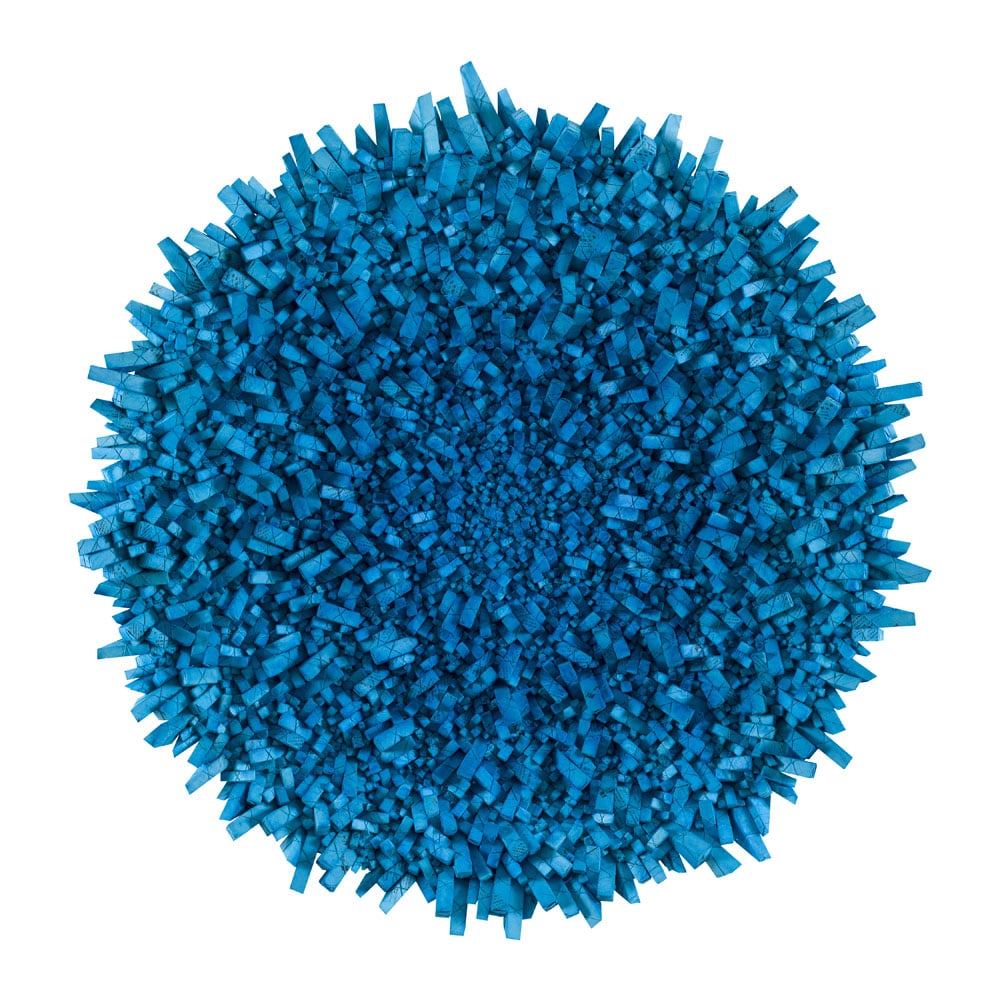How One Artist Uses Mulberry Paper to Express His Korean Roots


Artnet Gallery Network

For some artists, materials are a merely a means for telling a story. For others, like Korean artist Chun Kwang Young, the story is in the materials themselves.
A new exhibition of Chun’s work, on view now at one of Sundaram Tagore’s New York outposts, makes clear why. The exhibition—the artist’s first in New York in four years—brings together a selection of newer works from his “Aggregations” series: complex assemblages constructed with thousands of small, triangular pieces of polystyrene wrapped in mulberry paper and tied together with string.
The “Aggregations” take the form of freestanding sculptures or wall-hanging works. The constituent triangles are tinted with pigments, teas, or other agents, and they are strung together in complex arrangements that evoke naturalistic forms—waves emerging on a body of water or craters in a mass of rock.

Chun Kwang Young, Aggregation 12 – AP014 (2012). Courtesy of Sundaram Tagore.
Chun was born in Hongchun, South Korea in 1944, and moved to the US in the early 1970s to study at the Philadelphia College of Art. Inspired by Abstract Expressionism, he worked for decades making large oil paintings that explored the interactions of light and color. However, feeling like he was rehashing the ideas of the American painters that came before him, Chun grew disheartened and eventually moved back to Korea. He was in search of a way of working that allowed him to explore his formal interests through, as he calls it, a “Korean sensibility.”
Some years later, he found it: In a statement about the “Aggregations” works, Chun recalls a spring day in 1995, when, sick in bed, his wife brought him a package of pills.
“Suddenly, an old memory struck my mind,” the artist writes. “When I was young, I was a sickly child, and my mother used to take me to the Chinese medicine doctor in the neighborhood…I remember that numerous packages of mulberry paper were hanging from the ceiling, each holding a name card of the medicine wrapped inside. The image of my old memories of the drugstore lasted in my head for a while.”

Chun Kwang Young, Aggregation 17 – NV093 (2017). Courtesy of Sundaram Tagore.
Since then, mulberry paper has been essential to Chun’s work. Sourced from a plant native to Asia and used for a variety of commercial purposes, the material harkens back to the artist’s home country, while its durable pliability lends itself to formal experimentation.
“To me, the triangle pieces wrapped in mulberry paper are the basic units of information—the basic cells of life that only exist in art—as well as independently expressive social events or historical facts,” Chun writes. “By attaching these pieces one by one to a two-dimensional surface, I wanted to express how the basic units of information can create harmony and conflict with each other.”

Chun Kwang Young, Aggregation 18 – JA006 (Star 1) (2018). Courtesy of Sundaram Tagore.
“Aggregation” is on view at Sundaram Tagore Gallery through June 16, 2018.
